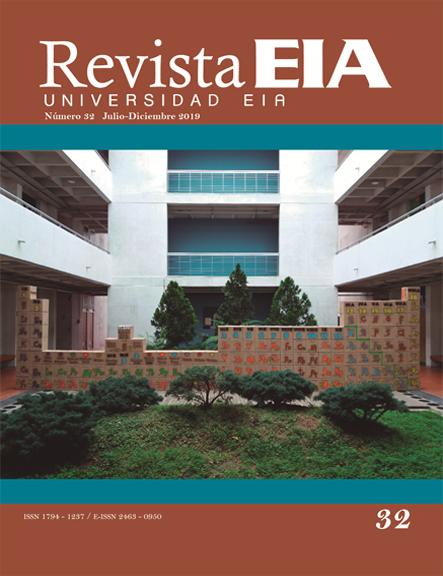Efecto de las condiciones de síntesis y purificación sobre la estabilidad de fenil-amino-dietoxi-silanos
Efecto de las condiciones de síntesis y purificación sobre la estabilidad de fenil-amino-dietoxi-silanos

Copyright statement
The authors exclusively assign to the Universidad EIA, with the power to assign to third parties, all the exploitation rights that derive from the works that are accepted for publication in the Revista EIA, as well as in any product derived from it and, in in particular, those of reproduction, distribution, public communication (including interactive making available) and transformation (including adaptation, modification and, where appropriate, translation), for all types of exploitation (by way of example and not limitation : in paper, electronic, online, computer or audiovisual format, as well as in any other format, even for promotional or advertising purposes and / or for the production of derivative products), for a worldwide territorial scope and for the entire duration of the rights provided for in the current published text of the Intellectual Property Law. This assignment will be made by the authors without the right to any type of remuneration or compensation.
Consequently, the author may not publish or disseminate the works that are selected for publication in the Revista EIA, neither totally nor partially, nor authorize their publication to third parties, without the prior express authorization, requested and granted in writing, from the Univeridad EIA.
Show authors biography
Los organil-amino-alcoxi-silanos son moléculas interesantes para la síntesis de materiales híbridos. Su uso se ha visto limitado debido a la escasa oferta comercial y a su baja estabilidad. En este trabajo se prepararon tres fenil-amino-dietoxi-silanos mediante condensación de fenil-cloro-dietoxi-silano y aminas (ruta 1) y fenil-trietoxi-silano y amiduros de magnesio (ruta 2). La caracterización y los estudios de estabilidad de los compuestos fueron llevados a cabo por 1H-RMN y CG-MS. Ambas rutas presentaron rendimientos mayores a 91%. Fue posible establecer que la sal acida, obtenida en la ruta 1, cataliza la descomposición total de los productos en un tiempo inferior a dos semanas. El medio de reacción de la ruta 2 mostró ser mucho menos agresivo, y después de dos semanas, aún permanece más del 60% de la concentración inicial.
Article visits 380 | PDF visits 292




